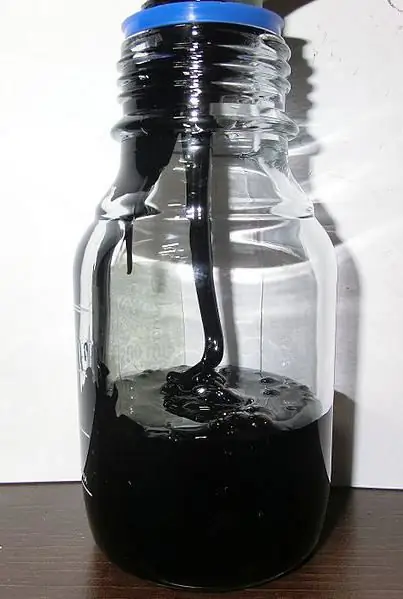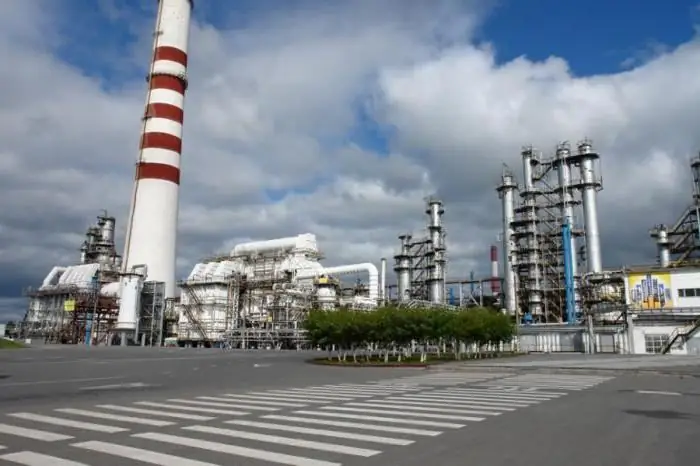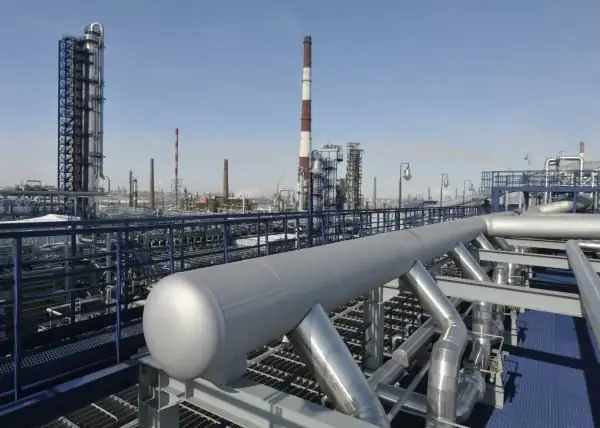2025 Author: Howard Calhoun | [email protected]. Last modified: 2025-01-24 13:10:47
Technologies are constantly being improved and new oil refineries are being built. This article will talk about one of them, namely, an oil refinery in the city of Kirishi, Leningrad Region.
A short history of the Kirishi Oil Refinery

The enterprise was put into operation on March 22, 1966, and built in record time. The construction of an oil refinery in Kirishi on the banks of the Volkhov River began in 1961, and five years later an act of commissioning was already signed. At that time, the plant was the minimum required set of technological units processing oil to supply the north-west of Russia with gasoline, fuel oil and diesel fuel. Thus, the Kirishi refinery has become the main supplier of raw materials for the Leningrad, Pskov and Novgorod regions.
Introduction of new installations

In the nineties, Kinef LLC underwent equally rapid transformations. So, in 1994, a plant forproduction of bituminous roll materials. Rolls of roofing waterproofing produced there are still delivered all over Russia today, because the quality of production has always been one of the best. In 1996, a complex for the production of linear alkylbenzene was launched - the basis for synthetic detergents with a biodegradability of 95%, which are used in the best industries. Many new installations have also been built and old ones have been refurbished to meet modern standards.

Kirishinefteorgsintez today
The history of the modern Kirishi refinery begins in 1993. Then the open joint-stock company "Surgutneftegaz" was created, which included "Kirishinefteorgsintez".
During the modernization, several facilities were updated at the enterprise. Including the isomerization unit "Isomalk-2". The place for the construction of the refinery in Kirishi was chosen well - the enterprise has enough territory for the active expansion of production assets. In pursuit of the percentage of oil refining into useful fractions, in 2001 the plant management decided to build a hydrocracking facility for deep oil refining.
The main object of the complex - the fuel oil processing unit - consists of sections capable of receiving up to 1.9 million tons of raw materials per year. The degree of distillation is 99%. A hydrogen sulfide processing unit was also launched, its conversion rate is about 99.9%. These numbers clearly show how welloil is being processed.
The plant is one of the five largest enterprises in the oil refining industry of the Russian Federation.

Sales of products
Now the plant produces about a hundred types of petroleum products - all types of gasoline, including high-octane, products that are in high demand in the paint and varnish industry, the production of household chemicals, and the construction industry. They also produce fuel for ships. Most petrochemical products are exported to Europe.
Currently, the minimum volume of oil products sold (for 20 trading days in September 2018) is 520 tons for gasoline, 260 tons for gasoline with an octane rating of 92 and 95. For summer diesel fuel, the volumes amounted to 500 tons. Also, the main products include various types of kerosene, fuel oil, oil bitumen, solvents, technical sulfur and sulfuric acid, liquefied gases, commercial xylenes.
LAB/LABS complex produces aromatic hydrocarbons (polyalkylbenzene), various types of liquid paraffins and two types of alkylbenzenes: linear and alkylbenzenesulfonic acid.
Gasoline, which is produced at the Kirishi oil refinery, can be bought at gas stations with the same name "Kirishinefteorgsintez". They are quite common on the territory of the Leningrad and partially Novgorod region. You can also meet them on the federal highway "Russia", and in other areas. True, logistics in this case is difficult, because finished petroleum products are transported mainlypipelines or vehicles. The price of gasoline at these gas stations is slightly lower than at more well-known gas stations. The quality of fuel is not inferior to them.
Recommended:
Yaya Oil Refinery. Yaya oil refinery (Kemerovo region)

Yaya Oil Refinery "Severny Kuzbass" is the largest industrial enterprise built in the Kemerovo region in recent years. It is designed to reduce the acute shortage of fuel and lubricants in the Altai-Sayan region. The design processing capacity of the first stage is 3 million tons, the introduction of the second stage will double the output
Oil is a mineral. Oil deposits. Oil production

Oil is one of the world's most important minerals (hydrocarbon fuel). It is a raw material for the production of fuels, lubricants and other materials
JSC "Achinsk Oil Refinery of the Eastern Oil Company"

The Achinsk Oil Refinery of the Eastern Oil Company (AO ANPZ VNK) is the only large oil refinery in the Krasnoyarsk Territory. The plant's capacities allow processing about 7.5 million tons of crude oil annually
Syzran Refinery. Oil refining industry. Refinery

Oil is one of the most important assets of our country, since not only the financial position of our state, but also its energy security directly depends on the "black gold". One of the pillars of the domestic oil refining industry is the Syzran Refinery
How is oil produced? Where is oil produced? Oil price

Currently, it is impossible to imagine the modern world without oil. It is the main source of fuel for various transport, raw materials for the production of various consumer goods, medicines and other things. How is oil produced?

